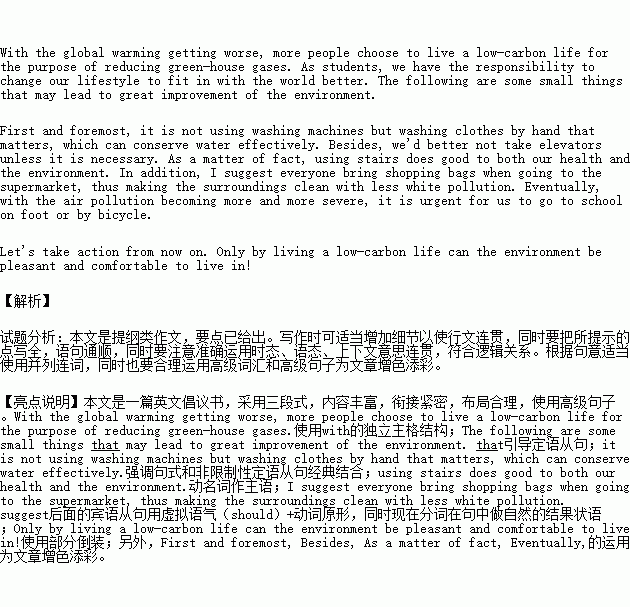题目内容
随着全球环境的恶化,为保护环境,越来越多的人选择过“低碳生活(low-carbon life)”即减少二氧化碳的排放,低能量,低消耗,低开支的生活。请写一篇英文倡议书,倡议你的同学加入“低碳生活”,为环保做出贡献。请参照以下要点:
• 1. 用手洗衣服
• 2. 多走楼梯,少用电梯
• 3. 去超市自备购物袋
• 4. 步行或骑自行车上学
注意:1.词数100左右;
2.可以适当增加细节,以使行文连贯;
3.开头已给出,不计入总词数;
4.参考词汇:楼梯:stairs 购物袋:shopping bags
With the global warming getting worse, more people choose to live a low-carbon life for the purpose of reducing green-house gases. ___________________________________
_______________________________________________________________________________
_______________________________________________________________________________
_______________________________________________________________________________
_______________________________________________________________________________
_______________________________________________________________________________
_______________________________________________________________________________
_______________________________________________________________________________
_______________________________________________________________________________
_______________________________________________________________________________
_______________________________________________________________________________


